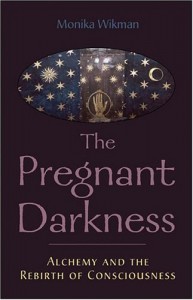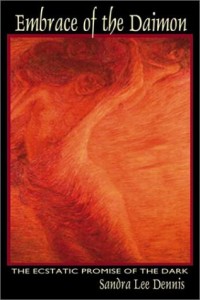Crossing the Horizon: A Journey of Archetypal Significance (2014)
Music: Chris Lastovicka
Libretto: E. M. Lauricella
Veronica Goodchild, PhD
May 18, 2014
Crossing the Horizon is an opera that tells the story of one type of alien encounter: repeated abduction by the spindly and dark-eyed Grays. The encounter experience is told from three perspectives that are interwoven in the telling: the actual memories of the event spoken by Clio; current reflections of ego consciousness, Zoë; and Ursula who offers a broader visionary and ‘objective’ understanding.
The extraordinary and beautifully crafted music created primarily by voice, piano, and strings, is so eerie, haunting, insistent, hypnotic, and sad that, as listeners, in the end we feel almost as psychically penetrated and violated by the visitors as the woman whose story as a child is portrayed here. The music is also heart-breakingly beautiful at times and reveals an empathic attunement to the possibilities, through enduring grief, anger, and suffering, of a renewal of our earthly life.
The abduction experience itself is mostly horrifying as the technologically advanced but emotionally dead aliens impose their mind and space altering abilities to completely freeze, control, paralyse, and invade the child against her will. The Grays crowd and track the child with no moral sensibility, interest, care or love, but simply to perform their illicit experimentation to steal human material for their alien-human hybrid-breeding program. Though the child tries to escape, she is powerless to act, even being forced to become one with them. She develops psychic abilities herself, but this is not experienced as a gift; rather it intensifies her suffering as she can now sense and anticipate when she will be taken again.
The story culminates with the young girl being handed her hybrid child. What is moving here is that, though the hybrid child is sickly, distorted, cold, and hairless, the young girl, though initially repulsed, reaches out to touch it, out of human empathy and compassion. Then the hybrid child is taken back by the alien Grays.
In this feeling response by the young girl to the hybrid child in spite of the terrors of abduction, we begin to experience a kind of redemption, and the archetypal dimension of this story referenced in the subtitle, begins to unfold. The story takes place in three scenes: Sunset, Night, and Dawn. This archetypal patterning of decline (of the light) and inevitable despair, followed by the dark night of the soul and deep suffering, and then the gradual dawning possibility of rebirth and renewal, is an ancient pattern in human consciousness and cultural history. We ourselves are living in the midst of an alchemical initiation of profound and global proportions as old structures die all around us, as the Earth herself groans in peril, and yet as signs of new life and possibility blossom in the midst of necessary and tumultuous course correction on our planet. Clio, who ‘holds the memory’ of the abduction event, is also the Greek Muse of history; and Zoë who offers current reflections, is a Greek
word that refers to life, but life as eternal and infinite (distinguishable from the Greek bios which refers to individual and finite life only). Moreover, the Ur (in Ursula) points to an original or earliest something, civilization for example. The names signal the broader historical and archetypal themes to be gleaned from this one individual tale. These personae, therefore, invite a wider reading of the story.
Swiss psychiatrist, Carl Jung wrote of the UFO and ET phenomena as pointing to a metamorphosis of archetypal themes currently underway in the collective unconscious as we move from the age of Pisces (duality and reason) to the New Age of Aquarius (the discovery of the ‘divine guest’ in our souls and our reunion with nature and the cosmos). Though elements of the Trickster archetype are apparent with all the shadow and strangeness of altered realities in abduction stories, nevertheless, a transformation potential is currently activated. Jung even felt that as human beings we are too cosmically isolated, and that, living on the brink of endless wars and unimaginable destruction, we could learn from ET civilizations that have found ways to navigate beyond their destructive phases.
We need to remind ourselves that the abduction story told in this opera is one kind among many others not so traumatic; indeed, some encounter stories border on mystical revelation and have been compared with kundalini openings. Harvard psychiatrist, John Mack, interviewed ‘experiencers’ extensively, and documented many of these encounters, some with ET groups who wish to help us acknowledge the path of destruction we are on and to reclaim our love for the Earth, for the beauty and majesty of nature, and to reconnect with our wise and spiritually advanced galactic neighbors. The Star Nation peoples, as indigenous cultures call those off-Earth civilizations who they claim as their ancestors, know that what we do here influences consciousness and has effects elsewhere in the galaxies, and they wish to hold us accountable. Sirian, Pleiadian, Arcturian, and Orion groups, for example, have been both experienced and reported as being active in human history since time immemorial, and can be contacted in non-ordinary states of consciousness to the present day.
Moreover, UK researcher of lost ancient mysteries and subtle earth energies, John Michell, observes that many people who have had UFO or ET experiences often come to love the earth more after their research and encounters and develop an interest in ley lines and geomancy, as if the ‘signs in the heavens’ related to the transitioning of the ages (Jung) lead us back down to the sacred history of our earth, The rediscovery of sacred geometry, and the ‘songlines’ or ‘dragon paths’ that link sacred sites together across the planet are becoming activated again today. Walking along the old ‘serpent energy lines’ that make up the ancient pilgrimage routes has become an international hobby these days. Crop circle mysteries, too, with their beauty and complex geometry, enliven our wonder at the Earth as a sentient being with a relationship to the stars above.
And this brings us back to Crossing the Horizon. In spite of, perhaps even because of, the disturbances of alien abduction, the protagonist reclaims the wonders of being human and living on planet Earth, and renews her relationship with wild nature, warm sunshine, green grass, freedom to choose, breath, understanding, delight, the rawness of Life itself in all its vicissitudes. She allows her suffering to break herself open to the reality that Life here is also a vision of deep complexity, of sorrow and pain, of joy and love, yet it is our reality, one that can open us to the deep mysteries. She crosses back over the horizon onto the ground of earthly, human experience, transformed by the dangers and opportunities of her crisis, of her encounter with that which is totally Other – “we are not the same,” the Grays say.
Furthermore, in the terrors of abduction we are, perhaps, seeing the face of our own shadow, our own technological hubris, imperviousness to grief and loss, and increasing lack of emotional rapport with each other as well as our erotic bonds to the earth. With our alien interface, we are being given the opportunity to see what we ourselves might become, perhaps are already frighteningly close to. The inhuman Grays, it seems, have returned to steal back their ‘humanity.’ Let us not lose ours. As Jung says, the path of individuation or self-knowledge always begins with the difficult acknowledgment and embrace of the shadow, the parts of ourselves we would rather suppress and deny. And so the young girl extends her hand to the hardly breathing hybrid; a moment of deep pathos. The archetypal significance of those suffering crossing the horizon into the liminal space of our own possibility is the shaman’s journey to another world that can offer us all a chance to bring back the treasure, to reflect and to change our own story, right now.
Chris Lastovicka who composed the music, and E. M. Lauricella who wrote the libretto, have achieved an extraordinary accomplishment in this haunting, evocative, and deeply moving opera. Courageously, they lead us on a journey of redemption, of death and renewal, from the dire implications of what it means to stray from our human path, and to a vision of what it means to finally come home.
Veronica Goodchild, PhD, is Core Faculty at Pacifica Graduate Institute, teaching courses in Jungian and Imaginal Psychology, in the Clinical, Depth, and Somatics Programs. She is an elected Affiliate Member of the Inter-Regional Society of Jungian Analysts. Veronica has written two books: Eros and Chaos: The Sacred Mysteries and Dark Shadows of Love (2001, 2008), and Songlines of the Soul: Pathways to a New Vision for a New Century (2012). Veronica has had a long interest in UFO/ET, Crop Circle, NDE, and other anomalous phenomena. An exploration of their meaning at this particular time in our history and the implications for the emergence of a new worldview based on the union of spirit and matter, form the basis of this most recent book. She collaborated on these interests with Harvard’s Dr. John Mack for several years before his untimely death.

 A rare sensibility inhabits the pages of Jungian Analyst Monica Wikman’s alchemical book, which makes it compelling for both seasoned clinician and interested layperson alike. Wikman explores the psychological/somatic processes of death and rebirth based on Jung’s alchemical model of the psyche and breathes new life into this model with contemporary clinical examples and some deeply moving dreams illustrating her themes throughout the text.
A rare sensibility inhabits the pages of Jungian Analyst Monica Wikman’s alchemical book, which makes it compelling for both seasoned clinician and interested layperson alike. Wikman explores the psychological/somatic processes of death and rebirth based on Jung’s alchemical model of the psyche and breathes new life into this model with contemporary clinical examples and some deeply moving dreams illustrating her themes throughout the text. We speak more urgently today of a mind-body connection as psyche truly seeks to incarnate in and through us beyond anything we might say or interpret about her. In this unique, engaging work, Sandra Dennis goes beyond the split that continues to underlie the phrase ‘mind-body’. Building on the alchemical notion that she calls the unio corporealis (‘union with the body’), first identified by Jung, she takes us on a journey to the profound levels of subtle body reality in that landscape of the psychoid that Corbin calls the imaginal world.
We speak more urgently today of a mind-body connection as psyche truly seeks to incarnate in and through us beyond anything we might say or interpret about her. In this unique, engaging work, Sandra Dennis goes beyond the split that continues to underlie the phrase ‘mind-body’. Building on the alchemical notion that she calls the unio corporealis (‘union with the body’), first identified by Jung, she takes us on a journey to the profound levels of subtle body reality in that landscape of the psychoid that Corbin calls the imaginal world.